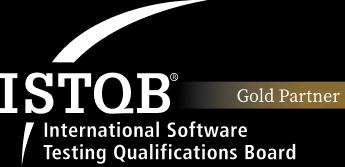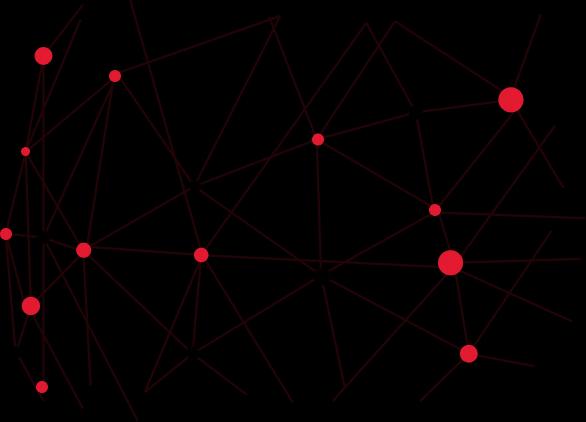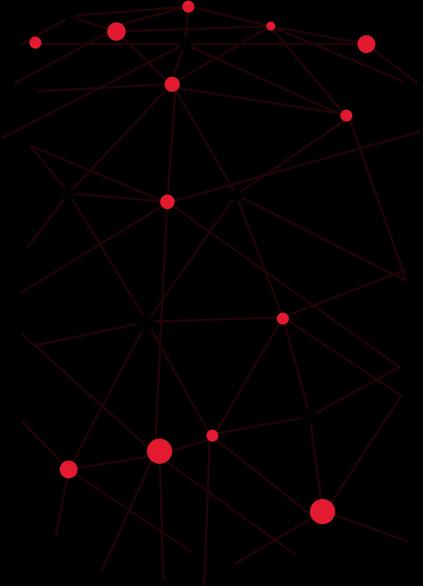
Named Entity Recognition (NER): A Core Technology in NLP and AI
In the era of data explosion and artificial intelligence (AI), the ability to understand and Natural Language Processing - NLP plays a crucial role in various fields, from information retrieval and chatbots to big data analysis. One of the core technologies of NLP is Named Entity Recognition (NER), which enables systems to automatically identify and classify key entities such as people’s names, organizations, locations, dates, numerical values,...in a text.
So, what is Named Entity Recognition? In this article, we will explore its definition, how it works, different recognition approaches, common models, and the challenges of NER. Let’s dive into the details with Tokyo Tech Lab!
I. What is Named Entity Recognition (NER)?
Named Entity Recognition (NER) is a technique in natural language processing (NLP) used to identify and classify named entities in a text. "Named entities" refer to specific items such as people’s names, locations, organizations, dates, monetary values, events, etc.
For example, in the sentence:
"Tokyo Tech Lab launches the TEAMHUB LMS software in 2025"
An NER system would identify and label:
- "Tokyo Tech Lab" → Organization
- "TEAMHUB LMS" → Product name (In some advanced NER systems, it might be labeled as "Product" or "Software")
- "2025" → Time
NER helps computers understand text similarly to humans, supporting many crucial AI applications, including information retrieval, chatbots, and intelligent recommendation systems.
II. How Named Entity Recognition (NER) Works
Named Entity Recognition (NER) systems operate by analyzing text, identifying key entities, and labeling them under predefined categories such as names, organizations, locations, dates, currencies, etc.
This process can be carried out using various approaches, ranging from manual rule-based methods to machine learning (ML) and deep learning techniques, each with its advantages. Let’s explore these details below.
1. The Entity Recognition Process from Text
NER is an automated process in NLP that aims to recognize and classify named entities in a text. It involves a series of steps combining linguistic technology, machine learning, and sometimes deep learning. Below is a breakdown of how NER works:
Step 1: Data Preparation and Preprocessing
Before NER starts identifying entities, the text needs to be preprocessed for easier analysis:
-
Tokenization: Splitting the text into smaller units such as words or phrases.
-
Example: "Tokyo Tech Lab launches the TEAMHUB LMS software in 2025" → ["Tokyo", "Tech", "Lab", "launches", "the", "TEAMHUB", "LMS", "software", "in", "2025"].
- For languages like Vietnamese, this process is more complex due to the lack of clear spaces between words. Tools like VnCoreNLP are required to segment text properly.
-
Normalization: Handling punctuation, case sensitivity, or spelling errors to standardize the data.
-
Part-of-Speech (POS) Tagging: Identifying word types (nouns, verbs, adjectives) to assist in entity recognition. Example: "Tokyo Tech Lab" would be tagged as a proper noun.
Step 2: Entity Detection
Once the text is processed, the system searches for potential entity phrases by comparing them against predefined rules, dictionaries, or machine learning models.
The main methods for entity detection include:
-
Dictionary-based approach: Matching words with a predefined vocabulary list.
-
Rule-based approach: Using regular expressions (Regex) to identify word patterns.
-
Statistical or Machine Learning-based approach: Using trained models to predict entities based on context. Example: "Tokyo Tech Lab" frequently appears in a corporate setting, so it is identified as an organization.
- Context analysis: Considering surrounding words to make better predictions. Example: The phrase "launches" before "TEAMHUB LMS" suggests it is a product name.
Step 3: Entity Classification
After detection, entities in the text are labeled into categories such as Person, Organization, Location, Date, Product, etc. Entity classification can be achieved through two primary methods:
a. Machine Learning Models for NER
Machine learning models use statistical algorithms to detect and classify entities in text. Unlike deep learning, this approach relies on handcrafted features extracted from data and uses supervised learning algorithms to train models.
Popular algorithms include:
-
CRF (Conditional Random Fields): A probabilistic graphical model widely used for sequence labeling tasks, including NER. CRF considers word context in a sentence to improve accuracy instead of classifying each word independently.
-
SVM (Support Vector Machines): A supervised learning algorithm that finds the optimal hyperplane to separate data classes. In NER, SVM uses features such as POS tags, word prefixes/suffixes, or surrounding words to make predictions.
-
HMM (Hidden Markov Model): A probability-based sequential model often used for entity recognition by considering transitions between words. However, HMM is less effective than CRF in modeling complex sentence relationships.
Model Training Process:
- Preparing training data:
- The dataset includes labeled sentences with entities.
- Example:
- "VinFast" → Organization
- "Hanoi" → Location
- Feature extraction (Feature Engineering):
- Key features for entity recognition:
- POS tags: Indicating whether a word is a noun, verb, or adjective.
- Contextual words: Neighboring words that influence entity recognition.
- Morphological features: Prefixes/suffixes of words (e.g., "Inc." often appears with company names).
- Training the model:
- Using algorithms like CRF or SVM to learn how to recognize entities based on training data.
- Predicting entities in new data:
- Once deployed, the model can classify entities in previously unseen text.
Example of Entity Recognition in a Sentence:
Given the sentence: "Tokyo Tech Lab launches the TEAMHUB LMS software in 2025". A trained model might recognize the entities as follows:
- "Tokyo Tech Lab" → Organization (Based on sentence context)
- "TEAMHUB LMS" → Product (Since "launches" often appears with products)
- "2025" → Time (Clearly a temporal reference)
b. Deep Learning
This approach leverages advanced neural network models to automatically learn and extract features from text data, improving accuracy compared to traditional methods. Some popular models include:
-
LSTM (Long Short-Term Memory): A type of recurrent neural network (RNN) designed to retain information over long distances within a sentence. It is well-suited for natural language processing (NLP) tasks due to its ability to capture long-term context.
- BERT (Bidirectional Encoder Representations from Transformers): Uses the Transformer architecture, enabling it to understand context in both directions (left to right and right to left). This allows BERT to identify entities with high accuracy, particularly in complex semantic cases.
Example: In the sentence "Tokyo Tech launches TEAMHUB LMS in 2024", BERT can correctly recognize that "Tokyo Tech" refers to an organization rather than a location based on the context.
With the ability to learn deeply from large datasets, these models are becoming the standard for many modern NLP applications.
Step 4: Post-processing
After entity recognition, the results may not always be perfect. Post-processing helps refine accuracy and ensure data consistency. Some key steps in this phase include:
-
Consistency checking: Ensures that the same entity is labeled consistently throughout the text. Example: If "Tokyo Tech Lab" appears multiple times, it should always be classified as an Organization.
-
Ambiguity resolution: When the system is uncertain about classification (e.g., "Apple" could refer to a company or a fruit), it relies on context or additional data to make a decision.
-
Phrase merging: Combines related words into a complete entity (e.g., recognizing "Tokyo Tech Lab" as a single entity instead of splitting it into "Tokyo", "Tech", and "Lab").
2. Common Entity Types Recognized by NER
NER can identify various entity types depending on the use case and application. Some of the most common entities include:
- Person (PER)
- Organization (ORG)
- Location (LOC)
- Date/Time (DATE/TIME)
- Monetary Value (MONEY)
- Event
- Product
Accurately identifying entity types helps computers better understand text context and enhances performance in NLP applications such as chatbots, information retrieval, and data analysis.
III. Approaches to Named Entity Recognition (NER)
Named Entity Recognition (NER) can be implemented using various methods, ranging from traditional rule-based and dictionary-based approaches to advanced machine learning and deep learning models. Below are the four main NER methods:
1. Dictionary-based Methods
This method relies on predefined dictionaries containing entity names such as people, organizations, locations, or products. During text analysis, the system compares words against the dictionary to determine if they belong to an entity category.
Advantages: Easy to implement and provides accurate results if the dictionary is well-maintained.
Challenges: Struggles with new entities not present in the dictionary and cannot differentiate word meanings based on context.
Example: "Apple" could refer to a fruit or a company, and without additional context, the dictionary-based method cannot distinguish between the two.
2. Rule-based Methods
This approach uses a set of predefined rules and patterns to identify entities. Rules can be based on grammar structures, characteristic formats, or specific indicators.
Example: Phrases containing "Mr.", "Ms.", "Company", "Corporation" often accompany proper names, while numbers formatted as "20%" or "12/05/2024" might belong to numerical or date entities.
Advantages: Provides good control over results if the rules are well-defined.
Challenges: Time-consuming to develop, difficult to scale with evolving data, and prone to failure if the sentence structure deviates slightly from predefined patterns.
3. Machine Learning-based Methods
Unlike the previous approaches, machine learning models do not rely on predefined dictionaries or rules. Instead, they learn to recognize entities from training data. Common models used in NER include:
-
Support Vector Machines (SVM)
-
Hidden Markov Models (HMM)
-
Conditional Random Fields (CRF)
Advantages: Can learn from data and recognize new entities without updating dictionaries.
Challenges: Accuracy depends on training data quality; insufficient or non-diverse training data can lead to poor recognition in real-world texts.
4. Deep Learning-based Methods
Deep learning is an advanced evolution of machine learning, utilizing deep neural networks (DNNs) for entity recognition. Some widely used architectures in NER include:
-
Recurrent Neural Networks (RNN)
-
Long Short-Term Memory (LSTM)
-
Bidirectional LSTM (BiLSTM)
-
Transformers (e.g., BERT, GPT, T5)
Advantages: High accuracy in entity recognition, even in varied contexts. Models like BERT understand word meanings based on surrounding context, reducing classification errors.
Challenges: Requires large datasets for training and significant computational resources (e.g., GPU or TPU), making it less accessible for smaller organizations or individuals without the necessary infrastructure.
IV. Popular Named Entity Recognition (NER) Models Today
Currently, NER has many widely applied models, each with unique characteristics in processing linguistic data and recognizing entities. In this section, we will review the most popular models.
1. SpaCy – A Powerful, Easy-to-Use NER Model for Python
SpaCy is one of the most powerful NLP libraries for Python, optimized for fast and efficient text processing. Its NER model is available for multiple languages and can recognize common entities such as person names, locations, organizations, and dates. The strengths of SpaCy lie in its high performance and simple programming interface, making it easy to integrate into real-world applications. However, its customization capabilities are limited compared to deep learning models.
2. NLTK – Suitable for Academic Projects
NLTK (Natural Language Toolkit) is a popular NLP library in research and education. It provides many useful tools for natural language processing, including an NER model based on statistical methods. Although well-suited for academic projects, NLTK has lower performance than SpaCy and lacks advanced deep learning models, making it less effective for commercial applications.
3. BERT-Based Models – A Revolution in NER
The emergence of BERT (Bidirectional Encoder Representations from Transformers) has completely transformed natural language processing, including NER. Unlike previous models, BERT uses a self-attention mechanism to capture the context of a word within an entire sentence, significantly improving NER accuracy. Enhanced versions of BERT, such as RoBERTa, SpanBERT, and BERT-CRF, have made this model one of the top choices in modern NLP applications. However, BERT requires substantial computational resources, especially for training or large-scale deployment.
4. Hugging Face Transformers – A Powerful Suite of NER Models
Beyond BERT, Hugging Face Transformers offers several powerful NER models, such as RoBERTa, DistilBERT, and XLM-R. These models are trained on vast amounts of data and can be fine-tuned for specific applications. However, due to their high resource requirements, deploying these models often necessitates powerful GPUs and deep NLP expertise.
V. Challenges and Limitations of Named Entity Recognition (NER)
Despite significant advancements in deep learning and AI, Named Entity Recognition (NER) still faces numerous challenges and limitations. These challenges are not only technical but also stem from linguistic and data-related issues. Below are the major challenges NER currently encounters.
1. Multilingual Processing and Low-Resource Languages
One of the biggest challenges for NER is recognizing entities in multiple languages, especially those with limited training data. Most NER models are trained primarily on English, leading to poor performance when applied to other languages such as Vietnamese, Thai, or Hindi. Additionally, languages with complex morphology, such as German or French, pose difficulties since an entity can appear in multiple forms. For low-resource languages, the lack of high-quality training data makes NER less effective.
2. Recognizing New Entities (Out-of-Vocabulary Entities - OOV)
NER models rely on training data, so when encountering new entities not seen before, they may fail to recognize them accurately. This issue often arises with newly established company names, emerging public figures, or newly mentioned locations in the news. Moreover, specialized fields such as medicine, finance, or law have unique terminologies that models may not be adequately trained for, making accurate entity recognition difficult.
3. Understanding Context and Handling Ambiguity in Language
Natural language is highly ambiguous, making it challenging for NER to identify the correct entity in every case. Some words can have multiple meanings depending on context. For example, "Amazon" can refer to a tech company or a river in South America. Additionally, many proper names overlap but refer to different entities, such as "Apple," which can mean a smartphone brand or a fruit. Without sufficient context, models may make incorrect or imprecise predictions.
4. Dependence on Training Data Quality
NER achieves high accuracy when trained on comprehensive and accurate datasets. However, poor-quality training data can cause serious issues. Common problems include imbalanced datasets (overrepresentation of certain entity types), mislabeled data, or a lack of domain-specific data. For example, an NER model trained mainly on news articles may perform well in political news but struggle with entity recognition in scientific or financial texts.
5. Impact of OCR Errors and Unstructured Data
When processing text from scanned documents, images, or unstructured data, NER can be affected by Optical Character Recognition (OCR) errors. OCR mistakes can lead to incorrect entity recognition. Additionally, unstructured data, such as social media comments or short messages, often contain abbreviations, misspellings, and non-standard writing styles, making entity recognition more challenging.
6. Keeping Data and Models Up-to-Date
The world is constantly evolving, and new entities continuously emerge. If an NER model is not regularly updated, it will fail to recognize newly introduced entities. For example, before 2019, "COVID-19" did not exist in training data, making NER models at the time unable to recognize it as a medical entity. Similarly, company name changes, such as "Facebook" rebranding to "Meta," can cause confusion if models are not updated in time.
VI. Conclusion
Named Entity Recognition (NER) is a core technology in Natural Language Processing (NLP), playing a crucial role in automatically extracting information from text. With the ability to recognize and classify named entities such as people, organizations, locations, dates, currencies, and more, NER enhances search optimization, data analysis, and improves the efficiency of AI systems, chatbots, and various applications.
Understanding how NER works and its different approaches can help organizations and individuals maximize its potential to automate processes, boost productivity, and extract valuable insights from text data. Thank you for reading this article! We hope this information has helped you better understand Named Entity Recognition (NER) and its applications in NLP. Don't forget to follow our blog for more useful articles on artificial intelligence and technology!
SHARE THIS ARTICLE
Author
Huyen TrangSEO & Marketing at Tokyo Tech Lab
Hello! I'm Huyen Trang, a marketing expert in the IT field with over 5 years of experience. Through my professional knowledge and hands-on experience, I always strive to provide our readers with valuable information about the IT industry.
More Posts



About Tokyo Tech Lab
Services and Solutions
Contact us
© 2023 Tokyo Tech Lab. All Rights Reserved.







